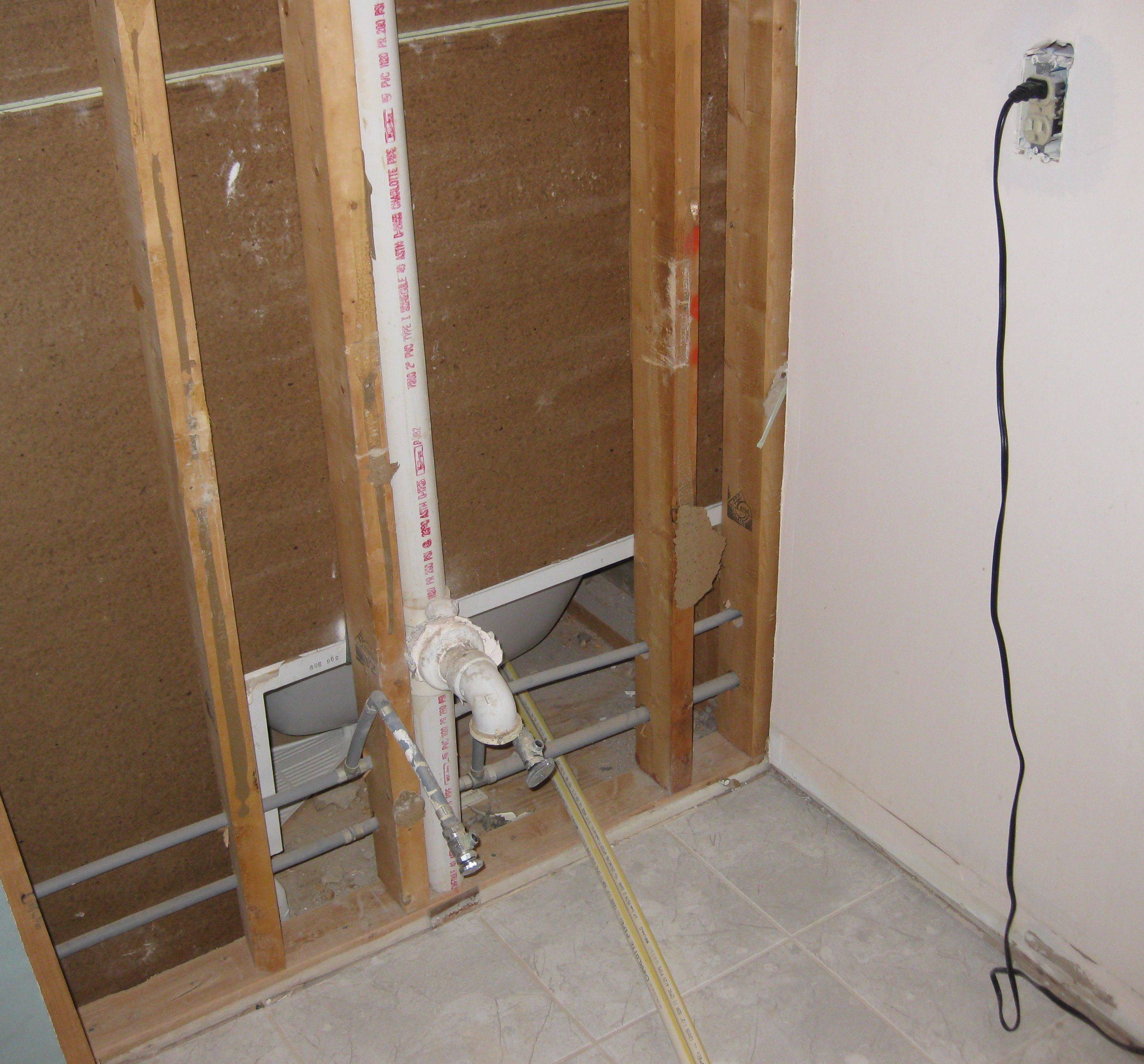Background
I'm in the middle of a bathroom remodel, and had to take off some drywall to get the tub in, then thought I may as well take all the drywall on that side off to give me an easier taping job. Also I wanted to replace another section of the polybutylene pipe while I had the chance.
The Goal
Then I thought now would be a good opportunity to add a few extra receptacles around our (new) vanity. We bought a 36" vanity, and would like to put one receptacle above the left side of the vanity, and another lower down for charging devices in the vanity (there's no back to the vanity).
The Details
I'd like to tap off the receptacle shown in the upper right. This receptacle is on the same circuit as three others in each of the three other bathrooms in the house, all four protected by one GFCI receptacle in the adjacent bathroom. I'd like to avoid cutting out the drywall around the receptacle itself, and instead cut out a section towards the bottom and tap off there so I don't have to be as concerned about doing a fantastic taping job since it will be hidden by the vanity (the strong glancing light from the vanity light would make the receptacle tape job very difficult I think).
If I tee off the wire towards the bottom of the floor, I believe I'd have to put a box in with a blank plate to make the connection accessible. Since the vanity would be covering it, would this not be acceptable? In that case I could put a plate on the other side of the wall in our bedroom.
Is there anything wrong with my plan?

